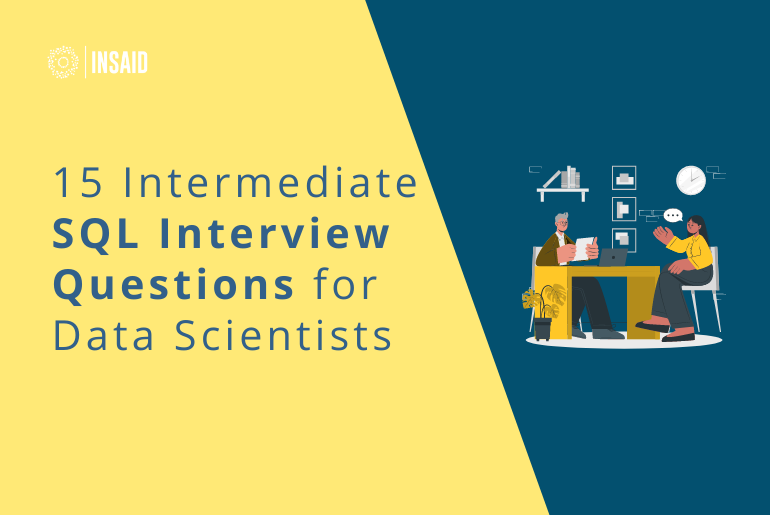We have interacted with a lot of Data Science professionals. And after analyzing their interview experiences, we can say that to crack any Data Science interview one needs to master SQL.
Structured Query Language or SQL is one of the most important aspects of the sexiest job of the century. Any top company you are interviewing for a Data Scientist role would most likely test your SQL skills.
In our last blog post, we shared with you the top 15 SQL questions for Data Science interview. Today, we have a list of 15 intermediate SQL questions (with answers) that will help you prepare and crack the Data Scientist interviews. This list includes SQL interview questions on INSERT queries, Views, Joins, and PL/SQL. Let’s get started.
SQL Questions for Data Scientist Role
1. Write a query to copy data from one table to another

2. When is the INITCAP function used in SQL?
The INITCAP function is used when we want the first letter of each word in the string in uppercase and the remaining letters in lowercase.
![]()
3. How to write an SQL INSERT query?

4. What is the difference between the LOWER and UPPER case manipulation functions?
The LOWER function returns the string in lower case.

On the other hand, the UPPER function returns the string in uppercase.

5. Define a View in SQL
A view is a virtual table consisting of rows and columns, and fields. The fields are from one or more real tables in the database.
6. How to create a View in SQL?

7. Define Join in SQL.
The Join clause in SQL is used to combine/join rows from two or more tables in the database. The records (rows) are joined on the basis of a related column between the tables.
8. What is the difference between Left Join and Right Join?
Left Join is used to extract all the rows from the left and the matched rows from the right table.

On the other hand, a right join is used to retrieve the records from the right table and matched records from the left.

9. What is a Self-Join?
In a self join a table is joined to itself on the basis of some relation between its own column(s). Self-join is a regular join and uses the INNER JOIN or LEFT JOIN clause.

10. What is a Cross-Join?
A cross join is a cartesian product of the two tables in a join. After cross join, the table will have the same number of rows as in the cross-product of the number of rows in the two tables.

11. What are the data types in PL/SQL?

12. Write a PL/SQL block to display records in the emp table using cursor.

13. Write an anonymous block procedure to print “Procedure P1 has been called”
An anonymous block procedure is stored in an SQL buffer and starts with a “DECLARE” statement. It is executed by using “/”

14. Write a stored procedure to display employee details of a particular department based on department number.

To execute the procedure:

15. What is the syntax for Open cursor operation
We open the cursor declared to allocate the memory for the cursor.
![]()
 Pin
PinWe hope you found these questions useful. If there are any specific types of SQL interview questions you want us to cover, let us know in the comments below.






